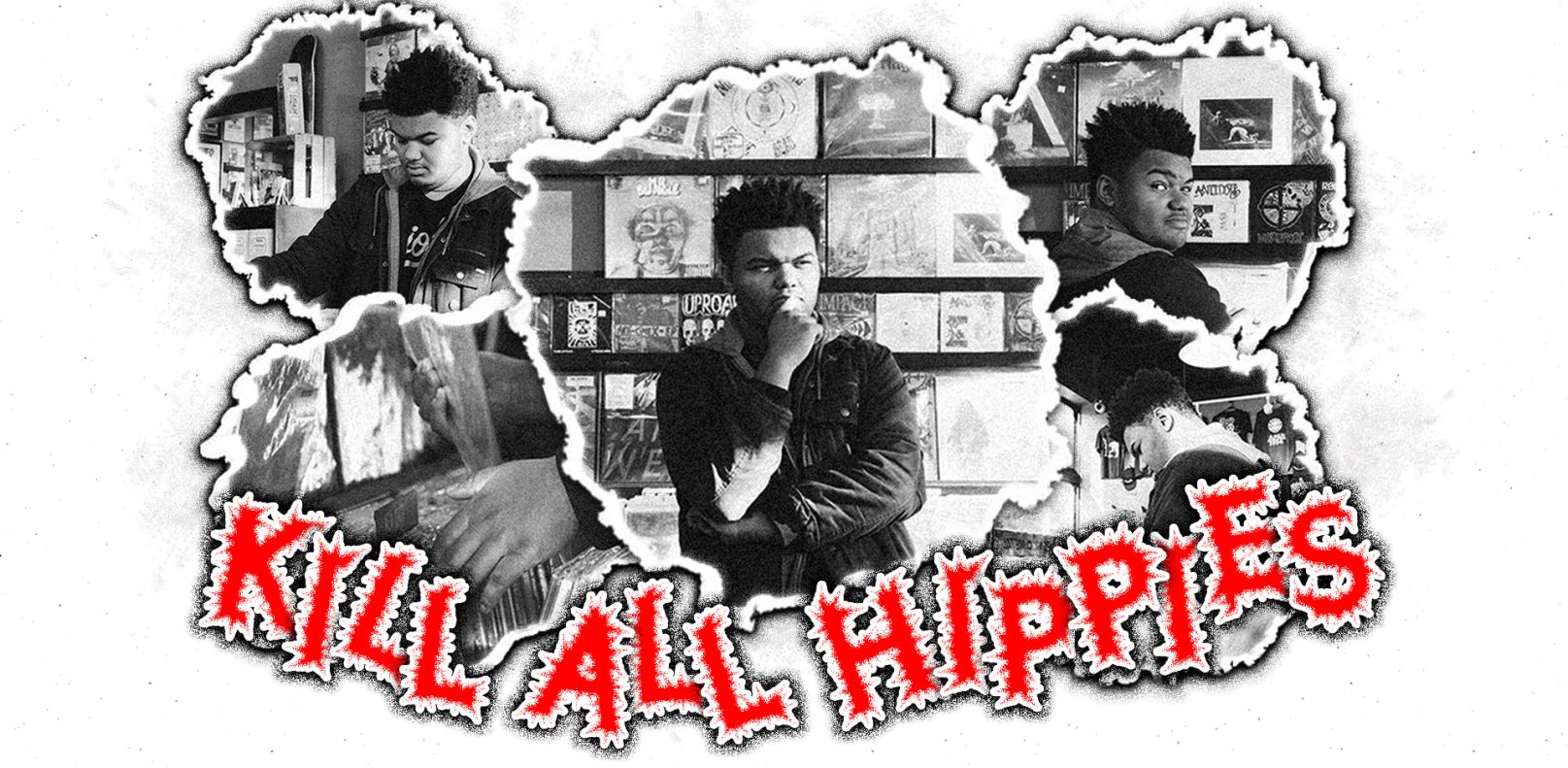Q: What is “Kill All Hippies?”
A: “Kill All Hippies” is a monthly album review column written by Me. It’s also a great song by Primal Scream.
Q: Who Is “Me”
A: Me is Mason Rowley, longtime Ink music contributor.
Q: What are your qualifications?
A: I have this column and you don’t.
Q: So without being cute, what actually is “Kill All Hippies?”
A: “Kill All Hippies” is a monthly album review column in which I’ll take on a recent release, give an in-depth review and overview of it, and then compare it to a classic album that’s sort of related, usually narratively but sometimes sonically.
Q: How can I contact you to recommend/praise/complain?
A: [email protected], or @blahblahjokecommentary on Instagram.
Q: What are the first two albums you’ll be talking about?

A Side: Mac Miller’s “Balloonerism”
It’s harder to find a better example of artistic growth than Pittsburgh’s chosen son Mac Miller. Starting off his tragically short career as an peddler of happy-go-lucky funtimes white boy party rap, somewhere in between Beastie Boys clunker “Fight For Your Right” and Lil Dicky’s flash-of-actual-potential “Bruh…,”, well, let’s just say he was unimpressive. He dropped “The High Life,” which everyone loved, then “K.I.D.S.,” which everyone loved, then “Blue Slide Park,” which nobody loved, and then “Macadelic” which I didn’t particularly like but which definitely made me turn my head.
This is the beginning of a long, storied artistic journey that would see Miller blossom from frat douchebag who definitely “became” a ‘rastafarian’” his second semester of college to one of the most richly developed and singular rappers in his genre. His death in 2018 wasn’t unexpected, but it was a blind side; despite his work since “Watching Movies With The Sound Off” focusing primarily on the lyrical content of “I hate drugs because they’re gonna kill me but I LOVE DRUGS,” no one expected his overdose. He’s since taken the same cultural place as a Kurt Cobain: a big, tragic question mark on where one of the most immediate talents of his generation would go if he had a little more time.
Maybe it’s that aforementioned obsession with overdose, with death, that led him to have such a comprehensive plan for his posthumous releases. 2020’s “Circles” was a monumental effort that felt like a transmission from Heaven. Now we have his second release since his death, and all it does is make that aching question mark hurt more.
The standout is, of course, the production. I can be pretty take-it-or-leave-it when it comes to Miller as an actual rapper or songwriter, but I can never beef with a beat from his production-side alter-ego Larry Fisherman. This was produced around the same time as his mixtape “Faces,” but the two sound nothing alike. “Balloonerism” features incredibly rich, psychedelic, and most importantly organic instrumentals. He had this ability to make a beat sound like a jam session; on one track, like “Do You Have A Destination,” melodic piano and organ lines dart in and out of the mix atop a dynamic drum beat. Those piano parts seem to take the same rhythmic space a typical adlib would, which leaves Mac’s actual adlibs and backup singing to be reverberated and delayed to a spacey extreme. On other tracks, like “Mrs. Deborah Downer” or “Transformations,” Mac allows the beats to expand out and stretch their legs, leading to this sloppy, hazy, hungover vibe, like your head after a night of psychedelics.
His production being immaculate doesn’t mean he’s a lyrical slouch here, however. “Funny Papers” shows Mac at his best, fluttering between stories of life and death held together with one of the most bulletproof and creative choruses he ever made. On “Manakins” he reinforces this cyclical mindset of life-god-death-drugs, comparing “heroism” to “heroin” and in two short verses, tackles the ennui of keeping up appearances and only going out for another score.
The part of Mac’s music that made him so ephemeral was despite being incredibly public, incredibly warm, and incredibly loved, you never knew exactly where he was on his records; head-noddingly faded or stone-cold sober, clear-headed and contemplative or apathetic and brooding. “Balloonerism” is filled with vim and vigor to the point where it adds another layer of confusion. Mac’s been gone for seven years now; this album was shelved in 2014, and yet it sounds like it was recorded yesterday. In ten years, it’ll still feel like everyone’s catching up.

B-Side: David Bowie’s ★
The argument for “greatest artist of the album era” is a useless one for two reasons. For one, music has become so specialized and so niche that there’s no way to judge it: is J Dilla’s skill with an MPC better or worse than Eddie Van Halen’s tapping ability? Can you compare Miles Davis’ compositional skills to Greg Ginn’s or Aphex Twin’s or George Clinton’s? It rapidly devolves into name-calling and obtuseness and all our time would be better served planting a tree or hugging a loved one.
Secondly, because the answer is David Bowie.
Yes, that’s right. I’m willing to place my flag in the most controversial sand in the world. Rock before him was leather jackets and beefy bar fight riffs; after, it was an entirely new beast, capable of complex genre (and gender!) bending. If I listed out every hit of his I’d need to send my editor flowers and a get-well-soon card. From 1970 to 1980 his songwriting was automatic: he had a direct hand in the creation of glam rock, post rock, dabbled in funk, soul, drum and bass, wrote stadium anthems like “Moonage Daydream,” soaring ballads like “Life on Mars?,” and pop hits like “Let’s Dance.” He was absolutely singular.
Then, for his final trick, two days before he passed from liver cancer, he released “Blackstar,” the swan song for not just his career but for his life. The album is linked with that death forever; not just in the sudden one-two punch of an explosive late-career high followed by the toppling of a man who’s impact made him seem invincible, but soaked into the experimental, fusion-heavy playing of the quartet backing him up. Tasked with the light task of putting a period on the end of Bowie as an artist, they dart between driving, motorik drums and sociopathic, jagged saxophone on “‘Tis A Pity She Was A Whore,” to the gentle, spacious dirge of “Lazarus.”
“Lazarus” also features an incredible performance by Bowie, kicking off the track with “Look up here man, I’m in Heaven/I’ve got scars that can’t be seen” and pretty much only getting sadder from there. His voice here is quivering in a way that makes you wonder just how much he was grappling with; bodily decay, artistic legacy, his ailing voice which cracks over every syllable? In his final refrain, where he emphasizes the freedom in death like a bluebird soaring as the instrumental swells and cuts, he drags you in. it sounds like you’re wrestling with that same weight.
“Lazarus” is, in my mind, the clear centerpiece of the album, but that has no effect on the quality of the other tracks. “Girl Loves Me” features a shuffling beat underneath this ominous, throbbing bassline, strings and horns waiting in the shadows before they strike forth, just to retreat back again. Bowie croons in three languages; common English, a form of 70s British gay slang named Polari, and Nadsat, the fake cant of Anthony Burgess’ “A Clockwork Orange.”
On the final track, “I Can’t Give Everything Away,” Bowie gives us the most straightforward song on the record. Atop a crunchy drum machine, luscious strings, and a harmonica theme from his 1977 release “Low,” he laments his inability to stay and give us more music, more life, more everything. That’s what the track feels like the most, after all; the drum machine is reminiscent of his 2000s work on “Earthling” and “Reality,” the strings and guitar solo in the middle echo his early ballads on “Hunky Dory” and “Ziggy Stardust,” and the sax that punches through the mix could have been ripped straight from “Station to Station.”
Final albums are lent by their very nature a degree of poignancy. We’re storytellers at heart; we see “Back to Black” or “Closer” and ache at a flame snuffed too fast, or the last gasp of something great left on the stage like “The Last Waltz” or “98.12.28,” or even a shuffling corpse, finally laid to rest like on “Cut The Crap” or “Full Circle.” But Bowie, in the way he always did, bobbed when others weaved; he told his own story as a final gift. A single spotlight, a bow, and he was gone.
Graphics by Marty Alexeenko

